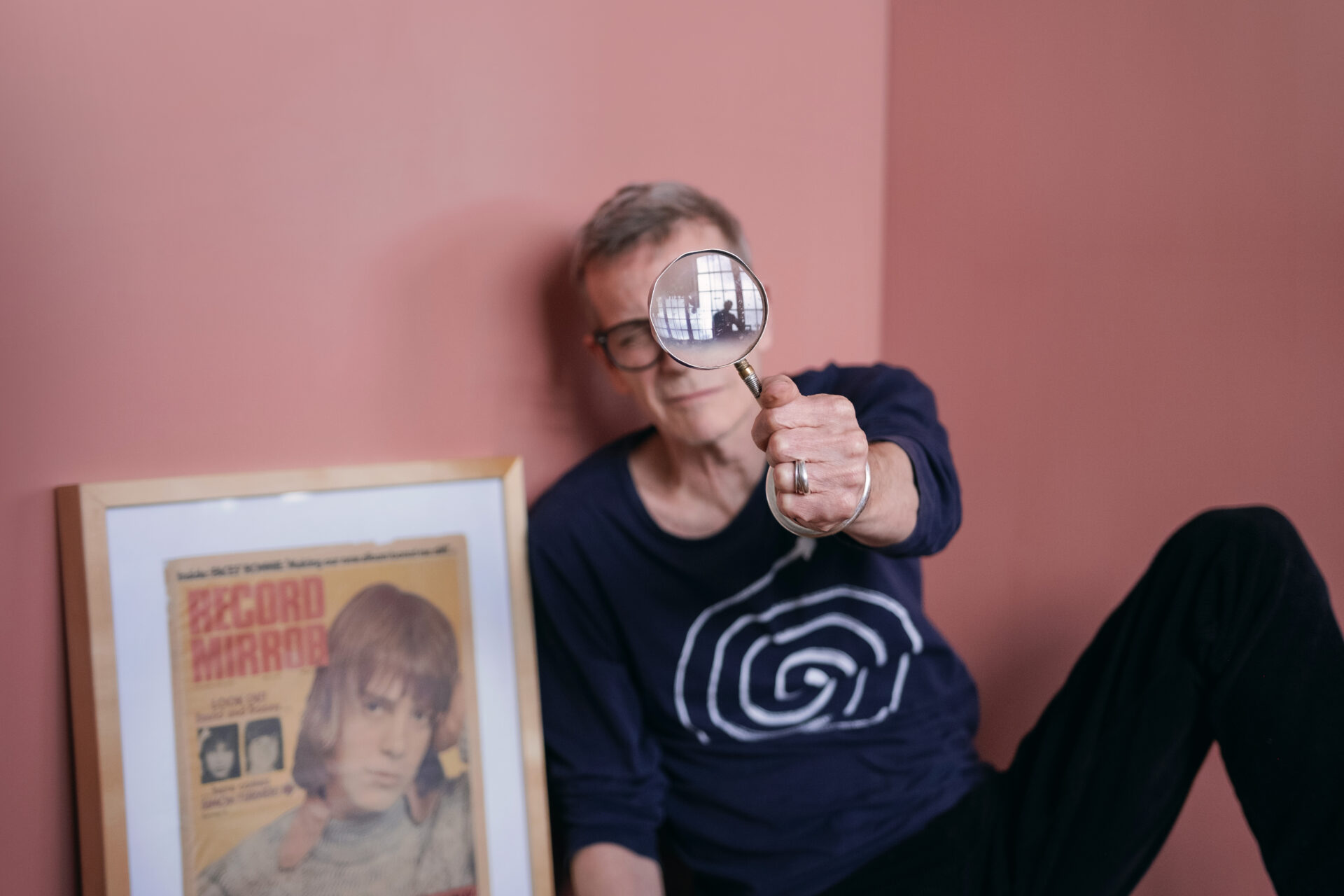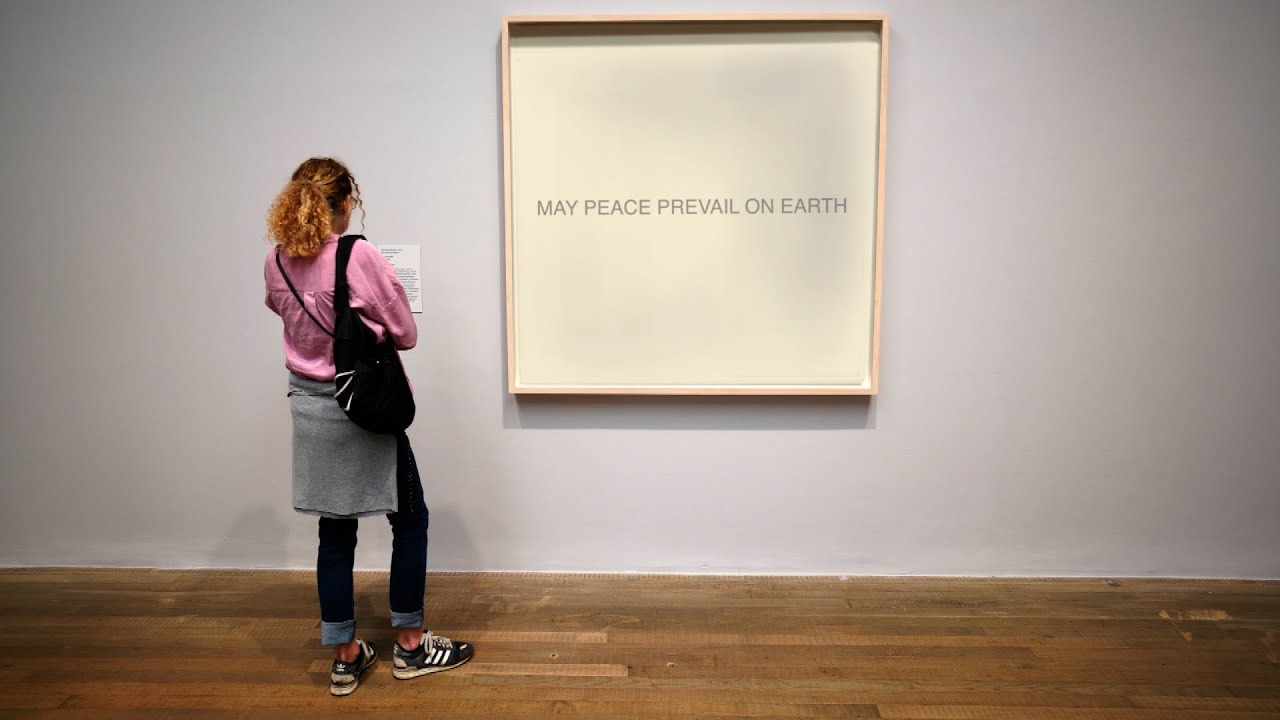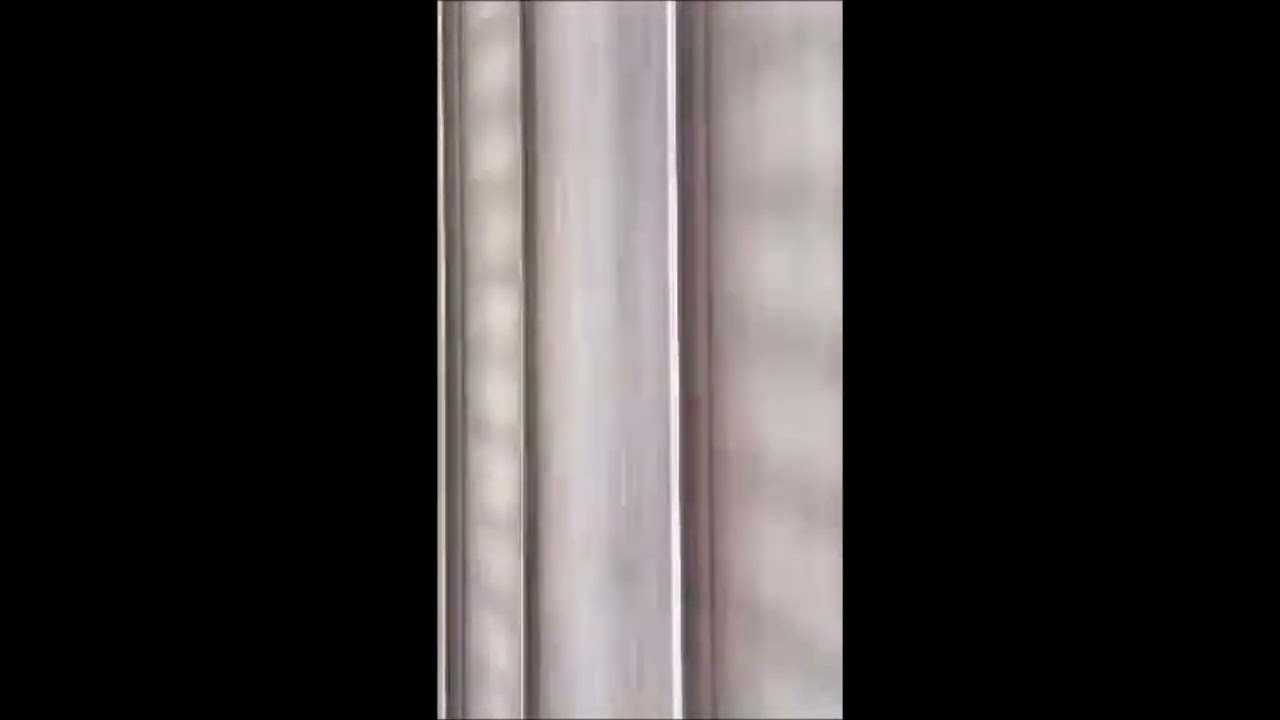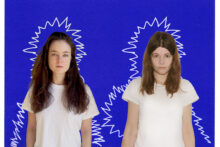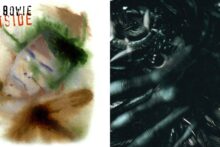On a torrid June morning, I’m invited to speak with Simon Fisher Turner at the Mute offices in South East London. The interview takes place in a converted loft that was once Daniel Miller’s residence but is now home to his label. Framed commemorative discs of Moby’s Play lean against the corridor walls, their former glory partially obstructed by a row of hanging coats. Turner is already here, setting up his red Edirol recorder on the balcony to capture trains screeching on the railway bridge below. “I collect sounds,” Turner tells me as we sit down in a large room filled with records, books and synthesisers. “But I don’t think of myself as a sound library. It’s a discipline where I must do something. That’s why I’ve stuck the microphone out the back there.”
Instability Of The Signal, his latest album for Mute, is a multifaceted record that incorporates many such field recordings alongside synthetic “slivers”, surreptitious strings, snatches of piano, the occasional detuned guitar and the composer’s own voice. The seeds germinated during Covid, when Turner came across some brooding noise experiments by David Padbury, who records as Salford Electronics. “I heard a piece by David and really liked it,” Turner recalls. “I sent him an email and suggested this idea of slivers of sounds. It’s something I’ve been after for ages. The older I got the less I played instruments, working with either my recordings or other people’s recordings. I asked David for these slivers, tiny bits of stuff, and started to make a piece out of the bits he sent me.”
Working at night, due to the compressed lifestyle that the pandemic impressed upon his household, Turner shaped Padbury’s foraged sounds and samples into blueprints for new compositions. Over thirty recordings, each one clocking in at around a minute in length, were manipulated into new structures, but only five made the cut. The lead single ‘Barefeet’ is a good example of this process. A looping phrase, something akin to a repitched elevator ping, holds court to deep pulses, sparse guitar and intrusions of electronic noise. You can also hear unmanipulated sounds of buzzing insects and dice thrown across the floor. In the music video, which is largely composed from still photographs taken by the filmmaker Sebastian Sharples, we see snapshots from everyday life: a desolate Soho street during lockdown, barren tree branches in winter, a car boot filled with trainers. These images document fleeting quotidian moments and echo Turner’s own enthusiasm for collecting “life recordings”, as he calls them.
Tying all these sounds together is Turner himself who sings spontaneously constructed poems. “At the end of Covid, I called up Daniel and told him about the slivers and that I’d love to sing. He said that the Mute studio is closing down but Francine Perry is finishing up there and we could record with them for a few days.” Perry is an award-winning producer who is one half of the minimal techno duo ORKA and also releases experimental electronica as La Leif. “Francine works really fast and I work really fast,” says Turner. “We were just naturally riffing. The vocals were made up on the spot, William Burroughs cut-up stylee. Just using this book [Taking On A Name: Videotapes 1986-94] about Breda Beban and Hrvoje Horvatic, and two poems by Harold Pinter, ‘Democracy’ and ‘The Special Relationship’. They’re war poems. I think they were just one take and that’s it.” Both texts reference the 2003 invasion of Iraq but the latter poem (“The bombs go off / The legs go off / The heads go off”) feels especially chilling when framed by Turner’s unsettling drones. The curt macabre imagery resonates with the interminable horrors unfolding in present day Gaza and Ukraine.
Beban and Horvatic were experimental filmmakers from war-torn Yugoslavia who settled in Britain in the 1990s. Using the aforementioned monograph (printed for the occasion of their 1994 retrospective at the Whitechapel Gallery) as source material for his lyrics was Turner’s way of paying homage to them. “They were video artists, filmmakers and friends of ours who both died [Horvatic in 1997, Beban in 2012]. It was just tragic. They were very, very influential and sort of a continuation of, for me, artists like Derek Jarman, who were just doing their own thing, and were really kind and generous.” Flipping through the book, Turner would arrive at a phrase or sentence that possessed some kind of magnetism and truncate it, divorcing it from its original context. For example, in the song ‘She Lowers Her Arms’ the original sentence reads “She lowers her arms and turns to walk slowly out of the frame”. Turner elaborates: “I was seeing that as a line. We’d track it and then go to the next line. I’m a big fan of William Burroughs’s cut-ups, through liking David Bowie, you know, from 40 or 50 years ago, whenever it was. It just made sense.”
Memories from this time surface on the track ‘Toast’, a song that evokes Turner’s childhood growing up in London. “I’ll get my own toast and read a comic / I like the war ones / I love my comics”, Turner reminisces in the song’s opening seconds. He sings about the joy of riding an old Routemaster bus, discovering the city by bicycle and living on his own as “a little thief”. The final refrain “my time in my time / my time in my mind”, which bounces up against a steady bass loop and scrawny guitars, is evidence of his nostalgia. Turner was a child actor before embarking on a career as a “non-popstar”, starring in Tom Brown’s Schooldays and The Intruder, among other TV series. Income from acting afforded the freedom to see bands regularly. “I saw The Spiders From Mars at Slough Technical College – that was life changing. All the universities used to put on gigs. There was the Marquee, the Lyceum, the Roundhouse. I saw everybody in the 70s. Once I discovered gigs, I was in heaven, really.”
While still a teenager, Turner signed to Jonathan King’s UK Records, releasing Simon Turner in 1973. His debut album is full of tepid covers but included a version of Bowie’s ‘The Prettiest Star’ which pulled Turner into the orbit around David and his then wife Angie. Turner spent time with the couple in Switzerland and looked after their apartment in New York. “I was friends with Angie and she was brilliant. She was a super strong woman and not given enough credit for supporting Mr. Jones. We had a great time and I ended up in very strange situations because of that. It was all part of MainMan, Tony Defries’s management company, who looked after Iggy Pop and Lou Reed. It was all very mad, but I learned that you have to fight for what you want.” Despite having rubbed shoulders with rock giants as a young adult, Turner’s time in the spotlight was brief. “I was in lots of magazines, but I wasn’t a popstar. And thank goodness. If I had been wildly successful, I wouldn’t be alive. I would have succumbed to everything. I had no control.”
In the early 1980s, when working for Cherry Red Records, Turner joined Matt Johnson and Colin Lloyd-Tucker in an early lineup of The The. Over the course of a single summer, the three-piece played swathes of support gigs on the London club circuit. “We all got our skinhead cuts, wore sweaters and jeans and carried our guitars in black plastic bags,” Turner remembers. “Just three of us playing Matt’s songs, one of Colin’s, one of mine. We didn’t have any drums so we were a good support band because we could just turn up and play.” Becoming increasingly more interested in “music [that] seemed light and touched our feminine side”, Turner and Lloyd-Tucker later splintered off to form the fictional French female duo Deux Filles, which blended ambient soundscapes with a post punk sensibility.
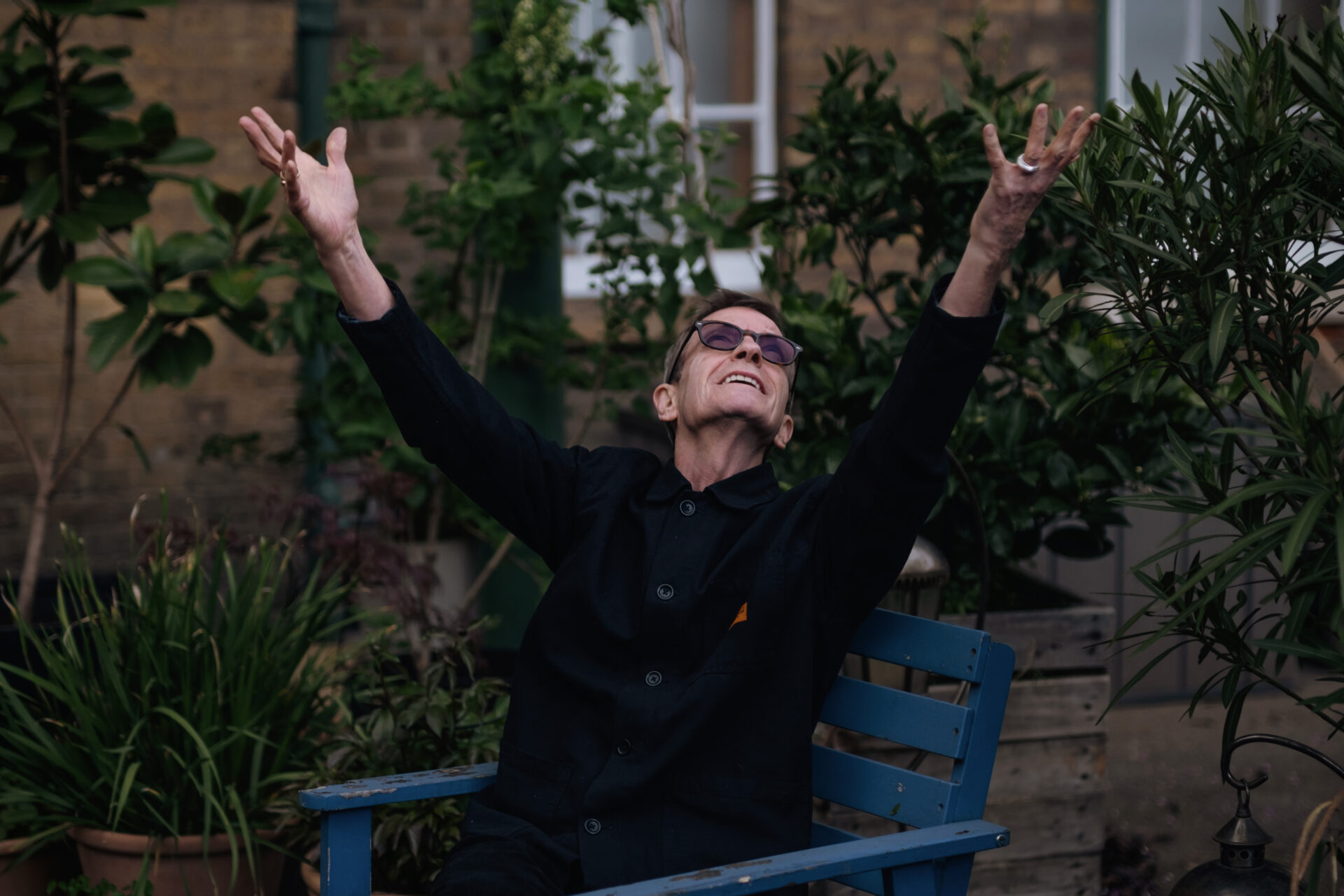
His other musical exploits included gallantly masquerading as The King of Luxembourg, performing baroque revisions of pop songs alongside his own opulent originals. “The first record [Royal Bastard, 1987] was a covers record. Mike Alway from Él chose all the songs. Then on the second record [“Sir”, 1988], I decided to write my own. As soon as you start to put words to music, then it has to be heartfelt and proper. If it’s insincere, lyrically, then it doesn’t make any sense to me. I can’t sing ‘Hey, baby, I love you’ unless I really mean it.” Turner also branched out into film scores around this time, working closely with Derek Jarman on projects including Caravaggio (1986), Edward II (1991) and Blue (1993). This led to more commercial work, such as the David Lynch-produced vampire flick Nadja (1994), and soundtracks for restored versions of The Great White Silence and The Epic of Everest (for which Turner received an Ivor Novello Award). Both films were originally completed in 1924 and depict two respectively tragic expeditions to the far corners of the planet: Captain Scott’s attempt to reach the south pole, and George Mallory and Andrew Irvine’s fatal effort to scale the summit of Mount Everest.
Over the years, Turner has been increasingly interested in experimenting with variations on texture, sound collage and noise. Soundescapes, his 2011 collaboration with the Norwegian filmmaker Espen J. Jörgensen foregrounds the fragmentation of samples in a similar vein to David Padbury’s slivers, while A Quiet Corner In Time from 2020 positions recordings of Edmund de Waal’s spinning ceramics as “sound solos” against alkaline washes of ambient drone. Meanwhile, his two albums for Editions Mego, Giraffe and Care (the latter being made in collaboration with Klara Lewis), released in 2017 and 2018 respectively, both experimented with harder edged industrial structures.
Despite his impressive résumé, Turner insists that his career was entirely accidental. “I went to ballet school. They had an agent so I started doing radio work and TV. I became an actor by accident, a bit like becoming a musician by accident. It was a period of time where you seemed to have accidents, which would lead to something else. It sums up my approach, without really even thinking about it.” One such accident was a chance encounter with the producer Guy Ford that led to Turner working with Jarman. “I was sitting on the street and Ford, who worked on Sebastiane (1976) and Jubilee (1978), came up and said: ‘I interviewed you when you were 16 years old. You were really obnoxious! Do you want a job?’ And suddenly I was working on The Tempest (1979). I drove the catering van and helped Heathcote Williams and Toyah Willcox test their lines. We were filming outside London and I just got involved.”
Because the shoot took place over several months at a remote location, Turner brought with him a keyboard and a Revox reel to reel recorder, contributing to concerts and happenings on the set during his downtime. This caught Jarman’s attention. He hired Turner to compose soundtracks for a string of Super 8 films and the historical feature Caravaggio. Their working partnership continued into the 90s, culminating in Jarman’s final film Blue. The famously emotive work chronicles the director’s experience of AIDS, and the partial blindness it inflicted on him, along with diaristic impressions of everyday life contrasted with dreamlike sequences. Consisting of a single shot of International Klein Blue, the work is held together by the strength of the narration and sound design. “Derek’s role in my life was like a teacher without teaching,” Turner says. “He’s constantly on my mind. He was wise and curious, instilling in me a sort of bravery. He used to talk about things I’d never heard of: Yves Klein, Caravaggio. I had no idea who these people were. He was capable of so much and made incredible images. He could do a narrative film like Edward II and then do The Last of England (1987) or The Garden (1990), which don’t have a normal structure. And then you have Blue, which is not so much a story, but observations about life and death and love in this frame, this void, of Yves Klein Blue: nothing and everything.”
After completing the voiceovers, Jarman tasked Turner with filling in the silences. Brian Eno lent them his house to record in and the producer Markus Dravs engineered the sessions. “The whole experience was mind blowing. The fact that it ended up as a film, this crazy idea, and all these people involved like Vini Reilly [The Durutti Column], is incredible. We had to structure it around the dialogue, so we were making it up as we went along.” Since its premiere in 1993, and Jarman’s death from an AIDS-related illness several months later, Blue has continued to evolve. Turner admits that the film is impossible to recreate live, which is why performances of the score tend to stretch Jarman’s original framing by experimenting with the setting, language, narrators, and duration. Last year’s Blue Now – directed by Neil Bartlett – restaged the project in venues like the Tate Modern and featured Russell Tovey, Travis Alabanza, Jay Bernard and Joelle Taylor as the narrators, consciously contrasting with, in Turner’s words, the “very English, white middle class actors” from the original film.
Turner considers Blue to be a seminal work, “as important as ‘Mona Lisa’”, and is visibly enlivened when talking about it. “Doing Blue live is great because it’s a different kettle of fish, much more fluent. For instance, I did it a few weeks ago in Italy, with only two performers, all in Italian. I had a piano and a computer. It was very focused. The concerts now illustrate the words far better than they do in the film. It’s just a fantastic opportunity [to experiment and improvise] because the words are there, the blue is there, and all we have to do is start. It’s really sexy and dangerous, a great palette to work against.” He explains that the project will resurface in the winter with more performances, this time featuring the cellist Lucy Railton and a looser sonic framework. Turner wants the music to avoid the trappings of illustrative sound effects, preferring it instead to be “like a mattress” that the actors can “jump on top of”.
Jarman’s legacy can be felt on Instability Of The Signal, too. Some of the sounds that made it to the album, albeit in different mixes, were first recorded for a documentary produced by The Derek Jarman Lab, a research media hub based at Birkbeck, University Of London. Directed by Tilda Swinton and Bartek Dziadosz, The Hexagonal Hive and a Mouse In A Maze (2024) is an essay film about how education is experienced across the world. “It’s a story of life – how every culture thinks about learning in different ways. For instance, there’s no point being in a village in Nigeria and learning about computer sciences if you haven’t got electricity. The more we looked into making a film about learning the more complicated it became, because it’s a big world and everybody has different ideas.” On the album, Turner’s textures, cut-ups and slivers are bridged with instrumentals performed by the contemporary classical Elysium Collective. These sessions were initially recorded for an exhibition of Jarman’s Super 8 portraits held at the LUMA Arles, France (2021-22). Later finding their way to the record, tracks like ‘Turning Slowly’ and ‘Purr’ inject a sense of drama to the proceedings. The strings cut across Turner’s drones like sirens through fog, while the prepared piano and closely miked whispers on ‘I Can’t Hear Anything’ fill the air with paranoid trepidation.
Never straying too far from moving image, Turner continues to collaborate with filmmakers. The deceptive simplicity of Chris Newby’s juxtapositions seamlessly complement the cold tranquillity of ‘Bless Your Hands (Part 1 And 2)’. Waves lap against the walls of a church, while children walk along its snow capped roof, recalling the frozen stillness in The Hunters In The Snow (1565) by Pieter Bruegel the Elder. The Japanese filmmaker Isao Yamada also contributed a Super 8 video for ‘Turning Slowly’. Edited from a much longer film inspired by Instability Of The Signal, it features shaky street scenes exposed onto expired film stock. The images are awash with a fading blue tint reminiscent of indeterminate memories left out in the sun.
Yamada features on the album’s cover, listening to the record for the first time, seemingly enraptured by the experience. At one point, another photo was considered for the cover, taken by Andy Warhol, of a young Turner partying with Fran Lebowitz on top of the World Trade Center. Why was that photo not used? “The Warhol thing would have been great. It was 48 years ago – a party for Dolly Parton – the contact sheets are all online. I went with Danny Fields, who managed the Stooges, Iggy, and the Ramones. I called Danny, who hadn’t spoken to me for years, and we went down this chain of trying to get permission, but they [The Andy Warhol Foundation] asked for a lot of money, £5,000 pounds or whatever. It was ridiculous.”
As we wrap up, Turner wonders if the SD card in his recorder maxed out. I take the opportunity to ask him about the ethics of collecting sound. Has he ever felt like he’s eavesdropping or using something he shouldn’t? “There was a Mute concert at the Roundhouse [in 2011] and I had been recording stuff from YouTube of the war in Syria. I saw this terrifying footage of a young couple who were on the roof of their house with tanks in the square below them. All you heard were these engines, the most horrific sounds. I played it with Mira Calix and Laura Moody and it was really, really disturbing because nobody would have known what it was but they would have felt that it was heavy. It was as political as I’ve ever been. I’m actually not interested in that kind of intensity but with this [points to a copy of the new album], with ‘Democracy’, I can say it with Pinter’s words. That’s as far as I can go.”
Simon Fisher Turner’s Instability Of The Signal is released via Mute on 2 August

